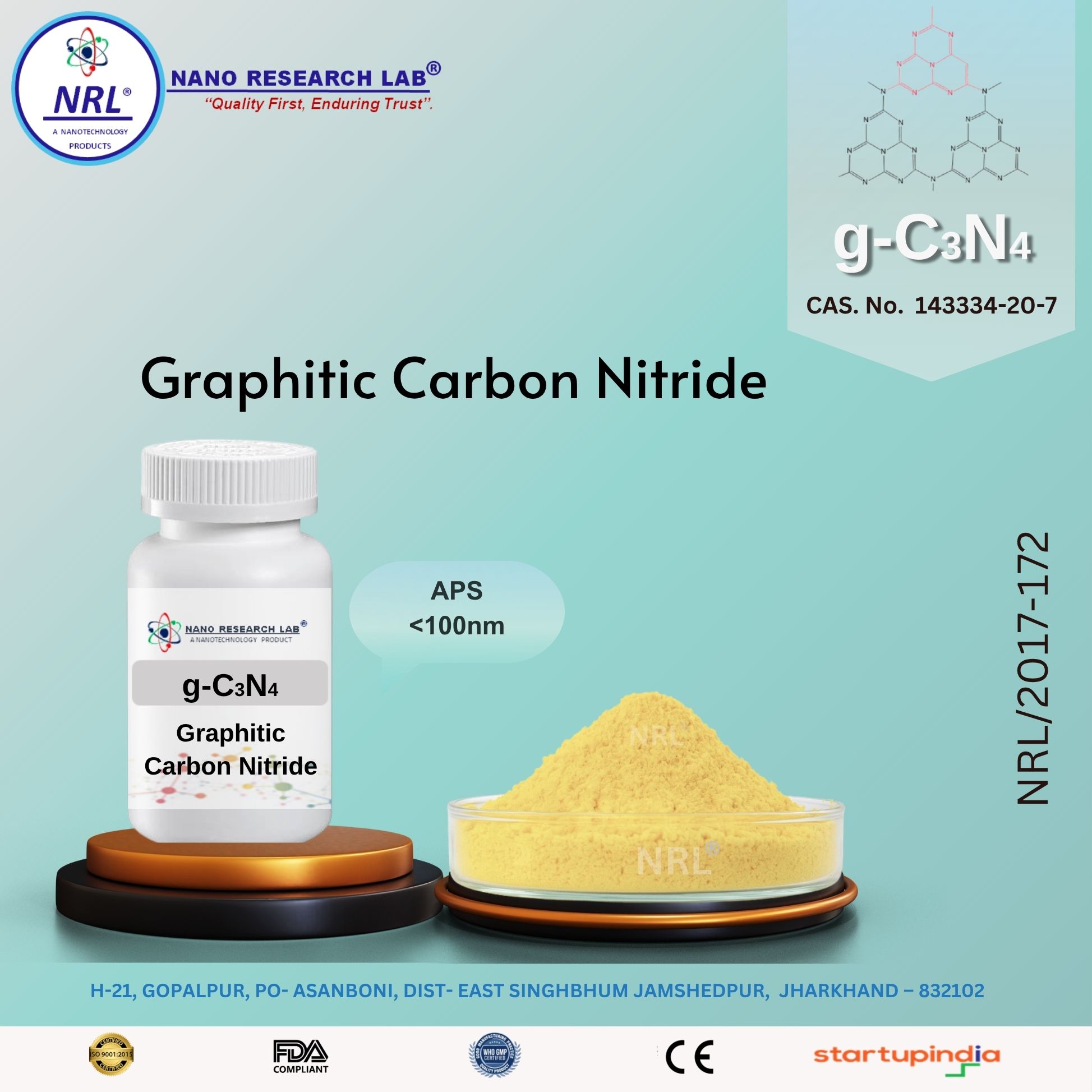
Graphitic carbon nitride (g-C3N4, <100nm, Purity: >99%)
₹1475.00
🧪 Graphitic Carbon Nitride (g-C₃N₄, <100 nm, Purity > 99%)
⚙️ Technical Specifications
Property | Specification |
|---|---|
Chemical Formula | C₃N₄ |
Material Name | Graphitic Carbon Nitride (g-C₃N₄) |
Purity | >99% |
Particle Size | <100 nm |
Appearance / Color | Light yellow to pale brown fine powder |
Crystal Structure | Graphitic, layered hexagonal |
Density | ~1.6 g/cm³ |
Band Gap | ~2.7 eV (semiconducting) |
Thermal Stability | Up to ~600 °C in inert atmosphere |
Specific Surface Area (BET) | 50–150 m²/g |
Solubility | Insoluble in water and most organic solvents |
Electrical Conductivity | ~10⁻⁶ S/cm (semiconducting behavior) |
CAS Number | 1633-05-2 |
Storage Conditions | Store in airtight container; protect from moisture, acids, and direct sunlight |
🌟 Key Features
High-purity nanosized g-C₃N₄ particles (<100 nm) for superior catalytic and surface activity
Semiconducting material with visible-light photocatalytic capability (~2.7 eV band gap)
Excellent thermal and chemical stability, non-toxic and metal-free
High surface area and active nitrogen sites for catalytic reactions
Environmentally friendly material for green energy and photocatalysis research
Low cost, lightweight, and easy to process for composite and coating applications
🔬 Applications
1. Photocatalysis & Solar Energy Conversion
Used in visible-light photocatalytic hydrogen generation and CO₂ reduction
Applied in environmental purification, organic dye degradation, and water splitting
Functions as a metal-free photocatalyst with high efficiency
2. Energy Storage & Conversion
Employed in lithium-ion batteries, supercapacitors, and fuel cells
Enhances electrochemical activity and ion transport due to its porous structure
3. Sensors & Electronics
Acts as a semiconducting and sensing material for detecting gases and biomolecules
Used in photodetectors, transistors, and optoelectronic devices
4. Catalyst Support & Heterojunction Materials
Serves as a support matrix for noble metal or oxide catalysts
Forms heterostructures (e.g., g-C₃N₄/TiO₂, g-C₃N₄/ZnO) for enhanced photocatalytic and electronic performance
5. Composite & Coating Materials
Incorporated in polymer and ceramic composites to improve thermal stability, conductivity, and mechanical strength
Used in protective coatings and anti-corrosion layers
6. Research & Nanotechnology
Popular in materials science, environmental, and nanocomposite research
Ideal for green chemistry and metal-free catalyst studies
⚠️ Handling & Storage
Store in a dry, airtight container under ambient temperature
Avoid exposure to moisture, oxidizing agents, and strong acids/bases
Handle with gloves, protective mask, and goggles
Use in a well-ventilated area to prevent dust accumulation
Keep away from open flames and high humidity
